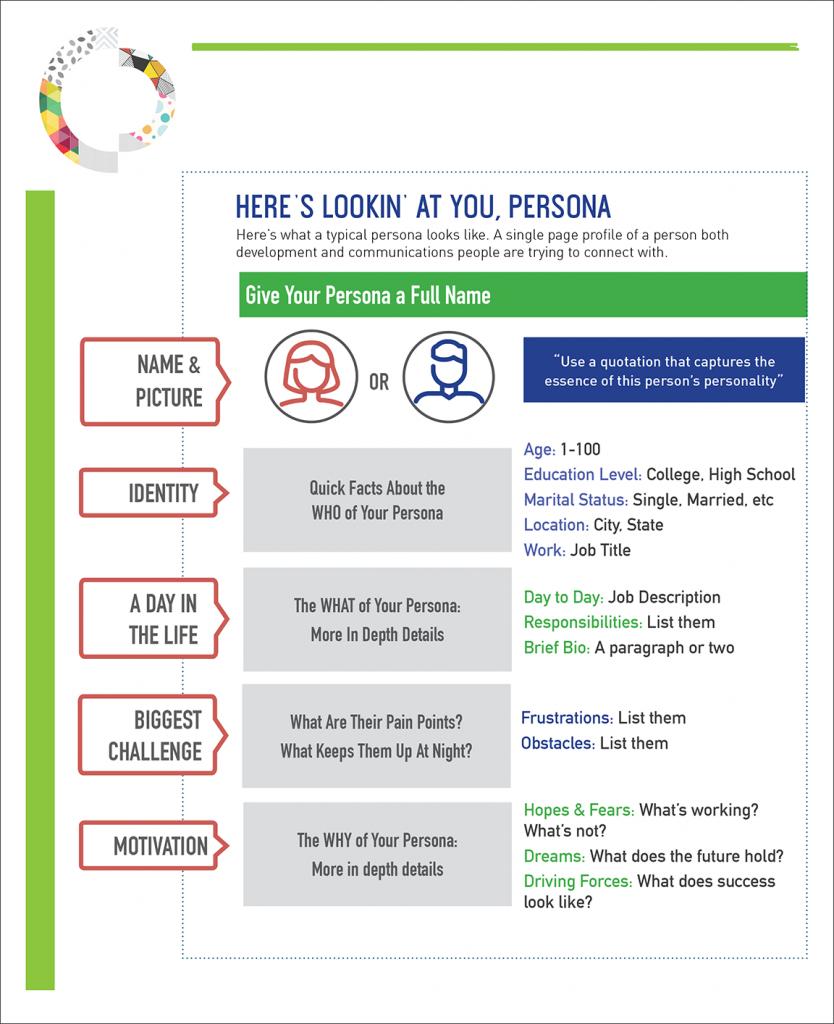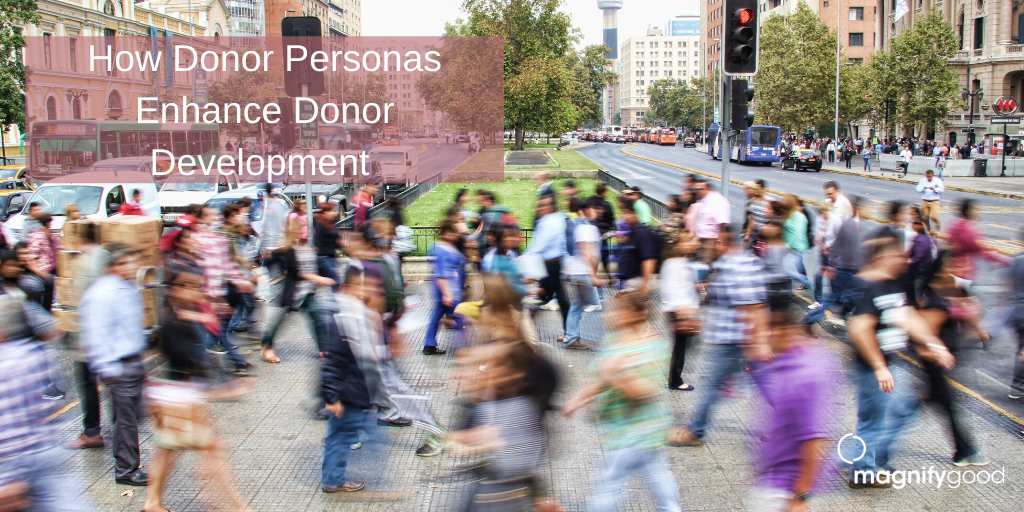‘You can spend your time on stage pleasing the heckler in the back, or you can devote it to the audience who came to hear you perform’ — Seth Godin
In the age of digital communication and personalization, it’s not enough to just share your message and hope it sticks with the right audience. Your messages and outreach efforts have to emotionally resonate with the audience your nonprofit seeks to connect with. They have to tap into the right motivations, desires and beliefs of others to drive people to act in support of your mission — and they also have to meet these people where they are, at the right time.
We’ve talked a lot about research-driven donor personas and their ability to take your marketing and development efforts to the next level. If you need a refresher on what donor personas are and why they’re so important to your nonprofit’s strategy, we’ve got you covered.
What Are Donor Personas?
Donor personas — fictionalized representations of your real-life supporters — provide valuable insight for your nonprofit, helping your team determine where to focus their time, resources and efforts on attracting new support. Personas help you paint a picture of who your donors are and identify what the best messages are to grab their attention. They give you an in-depth look at their passions, vision and core motivations for giving.
Connecting with your donors must happen at a deeper and more meaningful level to successfully encourage prospective donors to become passionate supporters of your cause. Doing thorough research to develop your personas is crucial to effectively reaching them and harnessing their support.
Let’s pretend you’re a nonprofit focused on ending animal cruelty.
Research-based personas can help your organization identify:
Your Donor’s Interest in Your Organization’s Mission
There are numerous ways that your organization’s donors — or supporters — invest in your mission. Understanding their level of interest and capacity to get involved with advancing your mission will help guide the opportunities your nonprofit shares with them. Are your supporters dedicated animal rights activists? Are they vegans whose lifestyle is driven by seeing animals as equal? Or are they individuals who simply own a pet they adopted at a shelter? Your organization has the potential to reach all of these people, but not all with the same messages or appeals.
What Kinds of Messages Motivate Them to Give
There are many angles to take when it comes to the types of messages you create and share. Knowing which ones your audience is most susceptible to is essential to successfully motivating individuals to give. Animal rights activists might respond well to PETA-like tactics of throwing red paint on a fur coat. Others who might not have these issues top-of-mind but who own a pet may be more driven by messages focused on the sadness of animal cruelty, like those ASPCA commercials we’re all familiar with.
Where They Go for Information
When your organization knows where its donors are most likely to spend their time, it ensures that you’re able to successfully get that information in front of them. If you’re trying to reach millennial donors, would you promote more avidly on Instagram or Facebook? If you’re focused on reaching baby boomers, is direct mail more effective than email? These are questions that having donor personas can answer.
Crafting Your Donor Personas
Donor personas give your organization the blueprint to strategically develop branding and messaging while effectively reaching the audience it seeks to connect with. They’re the key to crafting the right messages, for the right audience. 
To develop thorough personas, start with these questions:
Picture & Name – You don’t have to use a picture of someone you know, but using a picture — even if it’s a stock image — helps make the persona come to life. We also highly recommend naming the person.
Identity – The who of your persona goes here. Think about their gender, marital status, education, job title, level of education, etc.
A Day in the Life – The what of your persona goes here. What are they facing on a day-to-day basis? What is their function at work, what are they responsible for?
Biggest Challenge – What are their pain points? What keeps them up at night?
Motivation – The ‘Why’ of your persona goes here. What are their hopes, fears and dreams? Why do they get up in the morning? Why do they do what they do? What does success look like? What will change if they are successful?
If you still need help crafting your organization’s personas, we can help. We’ve written numerous blogs on the topic. If those don’t fully guide you in the right direction, give us a call. We’re here to help you be more successful in your mission to change the world.
Photo Credit: Mauro Mora via Unsplash
As a social sector communications agency, MagnifyGood specializes in elevating the marketing, PR, branding, advertising, and social media of nonprofits, foundations, and other mission-driven organizations. Looking to enhance your donor engagement, create compelling impact stories, establish a brand that aligns with your mission, or explore innovative strategies to connect with your community? Contact us here. Let’s magnify good together.



